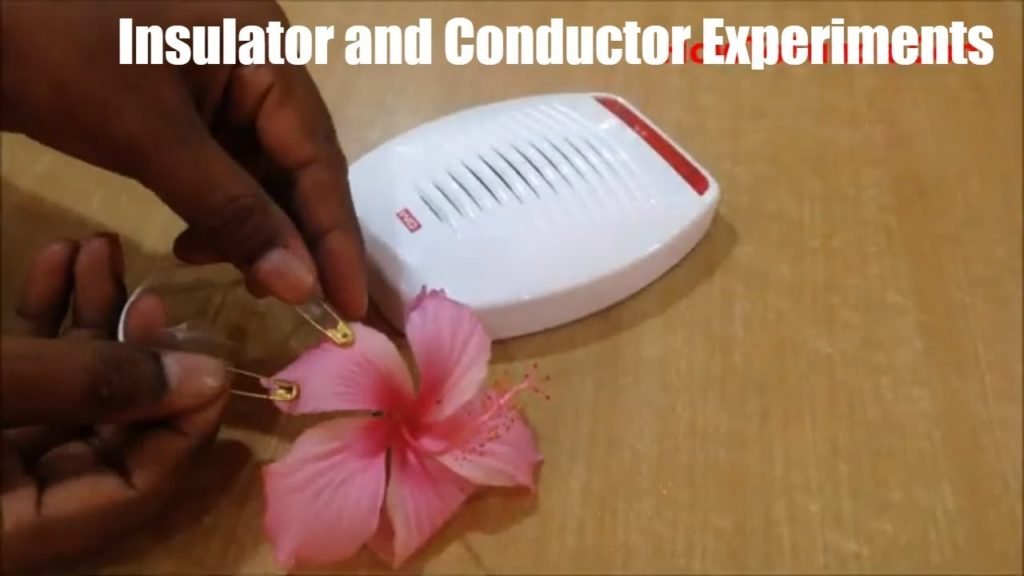
In this topic, we are going to show you how to build a conductor and insulator experiment for your science project or exhibitions.
Introduction – Conductors & Insulators
Conductors
When electrons flow freely from particle to another particle in a material they are called conductors.
Objects that are made up of conducting material will permit the transmission of charge across the entire surface of the object.
This happens when the charge is transmitted to the object at a particular location then that charge will be quickly distributed across the entire surface of the object.
The charge distribution is mainly due to electron movement.
Conductors allow movement of electrons from particle to particle.
The charged object will distribute its charge until overall repulsive forces between excess electrons will get minimized.
In case a charged conductor is touched to another object, the conductor will transfer its charge to that object.
This transfer of charge between objects will occur readily if the second object is made of conducting material.
Charges are transferred through objects due to the free movement of electrons.
Examples of conductors are metals, aquatic solution mixed with salt and the human body.
This experiments can be performed for 4th and 5th grade students
Insulators
Insulators are material that stops the flow of electrons from atom to atom and molecule to molecule.
In case if the charge is transmitted to an insulator at a given location then an excess charge will have remained at the initial location of charging.
Here insulators do not allow free transmission of electrons hence charge is seldom distributed evenly across the surface of the insulator.
Most of the time conductors are mounted on insulators. This arrangement helps prevent the charge from being transferred from the conductive object to its surroundings.
Examples of the insulator are Paper, rubber, plastic, and glass.
The conductivity of metal like silver is approximately a million trillion times that of glass.
Validation of Conductors and Insulators School Science Project Step by Step Video
In this video, we will show you the following steps and items that can be used to build the conductor and insulator model at home by taking help freely from your parents.
Materials Used to Do an Experiment of Insulator and Conductor
- Wires
- Safety pin
- Flower
- Coin
- Almond
- Knife
- Leaves
- Steel glass
- Pencil
- Spoon
- Cooper wire
- Alarm device
Prepare for Science Fair Questions & Answers – Conductor and Insulator Experiments
- What are conductor and insulator?
Electric current can flow freely in a conductor while insulators do not transmit electricity. Example of conductor is metal like copper and most non-metal solids are insulators and have high resistance to flow of charge through them. - Why do conductors conduct electricity easily?
Conductors allow free flow of electrons through them hence they conduct electricity easily. - What are conductors and insulators of heat?
Metals are conductors of heat whereas insulator does not transmit heat. - How does current flow in a conductor?
Electrons move freely around the object hence electricity flow easily in conductor. - Why are insulators poor conductors?
Insulators stop flow of electrons hence is poor conductors.
Conclusions
Conclusion
Conductors and insulators help us to understand the flow of electrons in conducting and non-conducting materials.

